Federalism powerpoint
Download as PPTX, PDF0 likes1,551 views
The document outlines the 5 types of powers divided between the national and state governments under the US Constitution: 1) Enumerated powers given to the federal government such as declaring war and coining money 2) Expressed powers which are enumerated powers given specifically to Congress like declaring war 3) Reserved powers given solely to state governments like operating schools and issuing licenses 4) Concurrent powers shared between states and federal government like making laws and borrowing money 5) Implied powers not explicitly written but suggested by the Constitution, allowing Congress to accomplish expressed powers, like building a mint to coin money.
1 of 12
Downloaded 25 times












Recommended
Judiciary in the united kingdom (english)



Judiciary in the united kingdom (english)sugirtha m
Ėý
This document summarizes the judiciary system in the United Kingdom. It outlines the key features of the British judicial system including the rule of law, the absence of a single court system and administrative courts, and the high quality of justice. It describes the different types of laws in practice in England such as common law, statutory law, and equity law. The structure of the judiciary is explained including civil courts like county courts and the supreme court, as well as criminal courts. Details are provided about the supreme court such as its inauguration in 2009 and composition of 12 judges.Constitution of India (Federalism)



Constitution of India (Federalism)sandhyakrish2
Ėý
The Constitution of India is the supreme law of India.
Federalism: The division of power between the federal and state government.What are the Importance Points of 73rd and 74th Constitutional Amendments (In...



What are the Importance Points of 73rd and 74th Constitutional Amendments (In...Prasad866874
Ėý
The 73rd and 74th amendments to the Indian constitution mandated the establishment of local self-governments (panchayats) in rural areas and municipalities in urban areas. Key provisions include direct elections to local bodies every five years, reservation of seats for scheduled castes, scheduled tribes, and women, and constitution of state election commissions and finance commissions. The amendments aimed to strengthen grassroots democracy and political representation at the local level.Codification of International Law



Codification of International LawMuhammad Bilal
Ėý
This document discusses the history and process of codifying international law. It outlines key events and efforts over time to systematically organize international legal rules and principles into written codes and agreements. Some of the major developments mentioned include the Hague Conferences of 1899 and 1907 which resulted in the first international conventions, the work of the League of Nations and United Nations to further codification, and important conventions on topics like the law of the sea, diplomatic relations, and treaties. Both benefits and challenges of the codification process are also reviewed.Understanding Federalism- Advantages and Disadvantages 2.ppt



Understanding Federalism- Advantages and Disadvantages 2.pptErato Kozakou-Marcoullis
Ėý
The document discusses different models of federalism including unitary, federal, and confederational systems of government. It provides definitions and examples of federal countries around the world and in the EU. Federal countries show great variety in terms of territory, population, number of constituent units, official languages, and distribution of powers. Both advantages and disadvantages of federalism are outlined. Key advantages include checks on power from division of powers, promotion of diversity, and protection of regional identities. Disadvantages can include lack of uniformity, complexity, and inefficient duplication of efforts. Successful federal democracies require cooperation, compromise, and balancing regional and national interests.Natural and Civil Rights



Natural and Civil Rightsdficker
Ėý
This document summarizes key information about natural rights, civil rights, and rights and responsibilities according to the U.S. Constitution. It discusses natural rights like life, liberty, and property that cannot be taken away versus civil rights like voting, free speech, and religion that are granted by the Constitution and can change over time. It also provides examples of how rights entail corresponding duties to one's community and government. The document then examines several landmark Supreme Court cases that have helped define and shape civil rights protections in the U.S., including freedom of speech, religious establishment, press freedom, and defamation law.Goi act 1935



Goi act 1935Alok Kumar Gaurav
Ėý
The Government of India Act of 1935 marked a milestone towards self-government in India. It provided for the establishment of an All-India Federation consisting of provinces and princely states. Power was divided between the Centre and provinces through three lists. However, the federation did not come into being as princely states did not join. The Act introduced dyarchy at the Centre and bicameral legislatures in six provinces. It extended communal representation and established institutions like the Reserve Bank of India and the Federal Court. The Act introduced responsible provincial governments in 1937 before being discontinued in 1939.Separation of powers



Separation of powersraj kishor
Ėý
Montesquieu developed the theory of separation of powers which proposes dividing the sovereign power of a state among legislative, executive, and judicial branches. This was intended to prevent tyranny and protect liberty. He argued each branch should have distinct and independent powers to check the others. While complete separation is impossible, the theory emphasizes limiting concentration of power. It influenced government designs like the US Constitution's system of checks and balances among the three branches.Article 17 & 18 under Constitution of India



Article 17 & 18 under Constitution of IndiaHitendra Hiremath
Ėý
This document summarizes Articles 17 and 18 of the Constitution of India. Article 17 abolishes untouchability and forbids its practice, making it a punishable offense. It aims to abolish longstanding social inequalities. Article 18 prohibits the acceptance or conferment of titles, except for academic or military honors, in order to promote equality among citizens. It also regulates the acceptance of foreign titles and honors by Indian citizens and public officials. Both articles aim to establish social equality and prohibit longstanding practices of discrimination.Summary of-the-us-constitution



Summary of-the-us-constitutionJudicial Intellects Academy
Ėý
The document summarizes the US Constitution, beginning with the Preamble outlining the reasons for independence and establishing a more perfect Union. It then describes the 7 original articles that established the three branches of government and their powers, as well as how the Constitution can be amended. Finally, it lists the 27 amendments added to the original Constitution, including those guaranteeing rights like freedom of speech and abolishing slavery.Bill of right under american constitution 



Bill of right under american constitution gagan deep
Ėý
The Bill of Rights comprises the first ten amendments to the US Constitution. These amendments were proposed following debates over ratifying the original Constitution to address criticisms and add specific protections for personal freedoms and rights. While Madison wanted them incorporated into the main document, they were instead proposed as supplemental additions. The Bill of Rights applies limitations on government power and reserves non-granted powers to the states and people. It was not part of the original 1787 Constitution.CONSTITUTIONAL LAW



CONSTITUTIONAL LAWGheethu Joy
Ėý
This document provides an overview of key aspects of the Constitution of India. It discusses the following in 3 sentences or less:
- The Constitution is the supreme law of India that defines the framework of government and establishes fundamental rights. It came into effect on January 26, 1950.
- Key features include being the longest constitution in the world, a blend of federal and unitary systems, provisions for amendment, and establishment of legislative, executive, and judicial branches of government.
- The Constitution guarantees fundamental rights to citizens, directive principles for government, and defines India as a sovereign, socialist, secular, democratic republic with universal adult suffrage and a parliamentary system of governance.Rule of Law



Rule of Lawaldenmae
Ėý
The document defines the rule of law as having four universal principles:
1) Government and individuals are accountable under the law.
2) Laws are clear, publicized, stable, just, applied evenly and protect fundamental rights.
3) Laws are enacted, administered and enforced through processes that are accessible, fair and efficient.
4) Justice is delivered in a timely manner by competent, impartial and independent representatives who adequately serve their communities.Administrative law



Administrative lawAkhil Shankar
Ėý
Administrative law governs the decision-making of government administrative agencies and ensures they follow proper procedures. It expanded in the 12th century as more agencies were created to regulate social, economic, and political spheres. Administrative law checks abuse of government power, ensures impartiality and accountability of officials to citizens, and protects citizen rights from overreach. It also divides government into three branches: the legislature that makes laws, the judiciary that interprets laws, and the executive that implements laws.Montesquieu's Doctrine of Separation of Power



Montesquieu's Doctrine of Separation of PowerA K DAS's | Law
Ėý
The main theme of Montesquieu doctrine is that each and every organ of the state will exercise of its own power and function, and no one organ will interfere into the functions of another organ. He is the proponent of this theory....Federalism



Federalismmrfurg
Ėý
The document summarizes the key aspects of federalism established by the US Constitution. It establishes a federal system that divides power between the national and state governments. The national government is granted expressed powers listed in the Constitution like defense, currency, and foreign affairs. State governments are given reserved powers over local issues like marriage, drinking ages, and business regulation. Concurrent powers like taxation and criminal law can be exercised by both levels. The 10th Amendment establishes that powers not given to the national government nor prohibited to the states are reserved for the states or the people.Parliamentary sovereignty



Parliamentary sovereigntyTawsifAnik1
Ėý
Parliamentary sovereignty is a most thinkable constitutional principle of UK's west minister system of parliament. So, here we discuss some important issues on parliamentary sovereignty.Administrative law 2nd lecture



Administrative law 2nd lectureKeshav Choudhary
Ėý
In this ppt we discuss the basic of administrative law with separation of power. It will helpful for those students who are preparing for law entrance examination. It will be also helpful for those students who are Pursuing LLB or LLM.Federalism



FederalismNeha Singh
Ėý
This document discusses federalism and decentralization in India. It defines federalism as a system of government where power is divided between a central authority and constituent units. India practices federalism through its three-tier structure of government with power shared between the central, state, and local governments. While India started as a "holding together" federation with an initially stronger center, power sharing has increased over time through the formation of new states along linguistic lines, the three-fold division of legislative powers, and recognition of regional political parties. Decentralization to local governments through the Panchayati Raj system aims to solve problems at the local level through increased participation and delegation of powers, though challenges remain in fully implementing this framework.Lecture 6 jurisdiction & immunity



Lecture 6 jurisdiction & immunityKingnabalu
Ėý
This document discusses different types of state jurisdiction under international law. It begins by defining state jurisdiction as a state's authority to prescribe and enforce laws. It then outlines three main types of jurisdiction: legislative jurisdiction to make laws; executive jurisdiction to enforce laws; and judicial jurisdiction of a state's courts. The document goes on to explain several principles of jurisdiction, including the territorial principle giving a state authority over events in its territory, the nationality principle over its nationals abroad, and the protective principle over threats to the state's security.Indian constitution



Indian constitutionROSHIN VARGHESE
Ėý
The document provides an overview of the salient features of the Indian Constitution. It discusses key aspects like the preamble, sovereignty, secularism, democratic republic, fundamental rights, federal structure, parliamentary democracy, emergency provisions, and more. The constitution is the longest in the world and has undergone several amendments since being adopted on November 26, 1949 and enforced on January 26, 1950.U.S. Federalism



U.S. FederalismUniversitÃĪt OsnabrÞck
Ėý
This document discusses the concept of federalism in U.S. Constitutional law across 22 pages. It begins by defining federalism as the division of power between national and state governments. It then outlines the goals of federalism, including showing how power is divided and how disputes are resolved. The document explores the sources of power for both the federal and state governments, including express powers, implied powers, and reserved powers. It also examines concurrent powers and how conflicts are resolved through the Supremacy Clause. The remainder of the document analyzes different types of preemption, including examples of cases where state laws have been found to be preempted by federal statutes.salient features of usa constitution



salient features of usa constitutionaaqash ali
Ėý
The American Constitution was enacted in 1789 at the Philadelphia convention, consisting of just 7,000 words across 7 articles and now includes 26 amendments. Key features include being written, brief, rigid, establishing federalism and separation of powers, along with checks and balances between the three branches of government. It also outlines a presidential system, bicameral legislature, and protection of fundamental rights.Federalism



Federalism8116
Ėý
Federalism is a system of government where power is divided between a central authority and constituent units. In India, power is divided between the central government and state governments. The constitution outlines three lists that distribute legislative powers - the Union List, State List, and Concurrent List. Local governments were later established as a third tier to further decentralize power and governance. Rural local governments are called panchayati raj systems while urban areas have municipalities and municipal corporations.Business law lecture 1



Business law lecture 1international islamic university islamabad
Ėý
This document provides an overview of the nature and types of law. It defines law as rules made by an authority to regulate society and conduct. The document then discusses the different branches and categories of law, including imperative law (rules enforced by authority), physical/scientific law (rules of nature), natural/moral law, conventional law (agreed upon rules), customary law (habitually followed rules), practical/technical law, and international law (rules between states). It concludes by defining civil law as the law of the state and courts.Salient features of the Indian Constitution



Salient features of the Indian Constitutionsiddhuvijesh
Ėý
It came in to effect on 26th January 1950.It provides the detail information of Legislative,Executive and Judiciary functions.It protects the fundamental rights of the people.Legislature



LegislatureMahesh Patil
Ėý
This document provides information on legislatures, specifically unicameral and bicameral systems. It defines unicameral as having one legislative chamber and notes some countries that use this system, including advantages like lower costs and disadvantages like possibility of hasty legislation. Bicameral is defined as having two chambers and examples provided are India, UK, USA. Benefits include preventing despotism and checking hasty laws, while drawbacks include potential deadlocks and higher expenses. The document also outlines some key differences between the systems and structures of legislatures in India, UK, and USA.House of Commons legislative process



House of Commons legislative processUK Parliament Outreach and Engagement Service
Ėý
The document outlines the legislative process in the UK Parliament. It discusses the different types of bills, including public bills, private bills, and hybrid bills. It then describes the various stages a bill goes through, including drafting, first reading, second reading, committee stage, report stage, third reading, and consideration in the House of Lords. It notes that bills can be amended and debated clause-by-clause in committee. Finally, it explains that a bill receives royal assent after both houses agree on the final text.Federalism updated



Federalism updatedafurgio
Ėý
The document summarizes the key aspects of federalism established by the US Constitution. It establishes a federal system that divides power between the national and state governments. The national government is granted expressed powers listed in the Constitution like defense, currency, and foreign affairs. State governments are granted reserved powers over local issues like marriage, drinking ages, and business regulation. Concurrent powers like taxation and criminal law can be exercised by both levels. The 10th Amendment establishes that powers not given to the national government nor prohibited to the states are reserved for the states or the people.Chapter 04 presentation on powers



Chapter 04 presentation on powersFredrick Smith
Ėý
1. Federalism divides power between the national and state governments, with certain powers delegated to each.
2. The national government has expressed, implied, and inherent powers outlined in the Constitution, while states have reserved powers not granted to the national government.
3. Some powers, like taxation, are concurrent between the two levels, while others, like treaty-making, are exclusive to the national government.More Related Content
What's hot (20)
Article 17 & 18 under Constitution of India



Article 17 & 18 under Constitution of IndiaHitendra Hiremath
Ėý
This document summarizes Articles 17 and 18 of the Constitution of India. Article 17 abolishes untouchability and forbids its practice, making it a punishable offense. It aims to abolish longstanding social inequalities. Article 18 prohibits the acceptance or conferment of titles, except for academic or military honors, in order to promote equality among citizens. It also regulates the acceptance of foreign titles and honors by Indian citizens and public officials. Both articles aim to establish social equality and prohibit longstanding practices of discrimination.Summary of-the-us-constitution



Summary of-the-us-constitutionJudicial Intellects Academy
Ėý
The document summarizes the US Constitution, beginning with the Preamble outlining the reasons for independence and establishing a more perfect Union. It then describes the 7 original articles that established the three branches of government and their powers, as well as how the Constitution can be amended. Finally, it lists the 27 amendments added to the original Constitution, including those guaranteeing rights like freedom of speech and abolishing slavery.Bill of right under american constitution 



Bill of right under american constitution gagan deep
Ėý
The Bill of Rights comprises the first ten amendments to the US Constitution. These amendments were proposed following debates over ratifying the original Constitution to address criticisms and add specific protections for personal freedoms and rights. While Madison wanted them incorporated into the main document, they were instead proposed as supplemental additions. The Bill of Rights applies limitations on government power and reserves non-granted powers to the states and people. It was not part of the original 1787 Constitution.CONSTITUTIONAL LAW



CONSTITUTIONAL LAWGheethu Joy
Ėý
This document provides an overview of key aspects of the Constitution of India. It discusses the following in 3 sentences or less:
- The Constitution is the supreme law of India that defines the framework of government and establishes fundamental rights. It came into effect on January 26, 1950.
- Key features include being the longest constitution in the world, a blend of federal and unitary systems, provisions for amendment, and establishment of legislative, executive, and judicial branches of government.
- The Constitution guarantees fundamental rights to citizens, directive principles for government, and defines India as a sovereign, socialist, secular, democratic republic with universal adult suffrage and a parliamentary system of governance.Rule of Law



Rule of Lawaldenmae
Ėý
The document defines the rule of law as having four universal principles:
1) Government and individuals are accountable under the law.
2) Laws are clear, publicized, stable, just, applied evenly and protect fundamental rights.
3) Laws are enacted, administered and enforced through processes that are accessible, fair and efficient.
4) Justice is delivered in a timely manner by competent, impartial and independent representatives who adequately serve their communities.Administrative law



Administrative lawAkhil Shankar
Ėý
Administrative law governs the decision-making of government administrative agencies and ensures they follow proper procedures. It expanded in the 12th century as more agencies were created to regulate social, economic, and political spheres. Administrative law checks abuse of government power, ensures impartiality and accountability of officials to citizens, and protects citizen rights from overreach. It also divides government into three branches: the legislature that makes laws, the judiciary that interprets laws, and the executive that implements laws.Montesquieu's Doctrine of Separation of Power



Montesquieu's Doctrine of Separation of PowerA K DAS's | Law
Ėý
The main theme of Montesquieu doctrine is that each and every organ of the state will exercise of its own power and function, and no one organ will interfere into the functions of another organ. He is the proponent of this theory....Federalism



Federalismmrfurg
Ėý
The document summarizes the key aspects of federalism established by the US Constitution. It establishes a federal system that divides power between the national and state governments. The national government is granted expressed powers listed in the Constitution like defense, currency, and foreign affairs. State governments are given reserved powers over local issues like marriage, drinking ages, and business regulation. Concurrent powers like taxation and criminal law can be exercised by both levels. The 10th Amendment establishes that powers not given to the national government nor prohibited to the states are reserved for the states or the people.Parliamentary sovereignty



Parliamentary sovereigntyTawsifAnik1
Ėý
Parliamentary sovereignty is a most thinkable constitutional principle of UK's west minister system of parliament. So, here we discuss some important issues on parliamentary sovereignty.Administrative law 2nd lecture



Administrative law 2nd lectureKeshav Choudhary
Ėý
In this ppt we discuss the basic of administrative law with separation of power. It will helpful for those students who are preparing for law entrance examination. It will be also helpful for those students who are Pursuing LLB or LLM.Federalism



FederalismNeha Singh
Ėý
This document discusses federalism and decentralization in India. It defines federalism as a system of government where power is divided between a central authority and constituent units. India practices federalism through its three-tier structure of government with power shared between the central, state, and local governments. While India started as a "holding together" federation with an initially stronger center, power sharing has increased over time through the formation of new states along linguistic lines, the three-fold division of legislative powers, and recognition of regional political parties. Decentralization to local governments through the Panchayati Raj system aims to solve problems at the local level through increased participation and delegation of powers, though challenges remain in fully implementing this framework.Lecture 6 jurisdiction & immunity



Lecture 6 jurisdiction & immunityKingnabalu
Ėý
This document discusses different types of state jurisdiction under international law. It begins by defining state jurisdiction as a state's authority to prescribe and enforce laws. It then outlines three main types of jurisdiction: legislative jurisdiction to make laws; executive jurisdiction to enforce laws; and judicial jurisdiction of a state's courts. The document goes on to explain several principles of jurisdiction, including the territorial principle giving a state authority over events in its territory, the nationality principle over its nationals abroad, and the protective principle over threats to the state's security.Indian constitution



Indian constitutionROSHIN VARGHESE
Ėý
The document provides an overview of the salient features of the Indian Constitution. It discusses key aspects like the preamble, sovereignty, secularism, democratic republic, fundamental rights, federal structure, parliamentary democracy, emergency provisions, and more. The constitution is the longest in the world and has undergone several amendments since being adopted on November 26, 1949 and enforced on January 26, 1950.U.S. Federalism



U.S. FederalismUniversitÃĪt OsnabrÞck
Ėý
This document discusses the concept of federalism in U.S. Constitutional law across 22 pages. It begins by defining federalism as the division of power between national and state governments. It then outlines the goals of federalism, including showing how power is divided and how disputes are resolved. The document explores the sources of power for both the federal and state governments, including express powers, implied powers, and reserved powers. It also examines concurrent powers and how conflicts are resolved through the Supremacy Clause. The remainder of the document analyzes different types of preemption, including examples of cases where state laws have been found to be preempted by federal statutes.salient features of usa constitution



salient features of usa constitutionaaqash ali
Ėý
The American Constitution was enacted in 1789 at the Philadelphia convention, consisting of just 7,000 words across 7 articles and now includes 26 amendments. Key features include being written, brief, rigid, establishing federalism and separation of powers, along with checks and balances between the three branches of government. It also outlines a presidential system, bicameral legislature, and protection of fundamental rights.Federalism



Federalism8116
Ėý
Federalism is a system of government where power is divided between a central authority and constituent units. In India, power is divided between the central government and state governments. The constitution outlines three lists that distribute legislative powers - the Union List, State List, and Concurrent List. Local governments were later established as a third tier to further decentralize power and governance. Rural local governments are called panchayati raj systems while urban areas have municipalities and municipal corporations.Business law lecture 1



Business law lecture 1international islamic university islamabad
Ėý
This document provides an overview of the nature and types of law. It defines law as rules made by an authority to regulate society and conduct. The document then discusses the different branches and categories of law, including imperative law (rules enforced by authority), physical/scientific law (rules of nature), natural/moral law, conventional law (agreed upon rules), customary law (habitually followed rules), practical/technical law, and international law (rules between states). It concludes by defining civil law as the law of the state and courts.Salient features of the Indian Constitution



Salient features of the Indian Constitutionsiddhuvijesh
Ėý
It came in to effect on 26th January 1950.It provides the detail information of Legislative,Executive and Judiciary functions.It protects the fundamental rights of the people.Legislature



LegislatureMahesh Patil
Ėý
This document provides information on legislatures, specifically unicameral and bicameral systems. It defines unicameral as having one legislative chamber and notes some countries that use this system, including advantages like lower costs and disadvantages like possibility of hasty legislation. Bicameral is defined as having two chambers and examples provided are India, UK, USA. Benefits include preventing despotism and checking hasty laws, while drawbacks include potential deadlocks and higher expenses. The document also outlines some key differences between the systems and structures of legislatures in India, UK, and USA.House of Commons legislative process



House of Commons legislative processUK Parliament Outreach and Engagement Service
Ėý
The document outlines the legislative process in the UK Parliament. It discusses the different types of bills, including public bills, private bills, and hybrid bills. It then describes the various stages a bill goes through, including drafting, first reading, second reading, committee stage, report stage, third reading, and consideration in the House of Lords. It notes that bills can be amended and debated clause-by-clause in committee. Finally, it explains that a bill receives royal assent after both houses agree on the final text.Similar to Federalism powerpoint (20)
Federalism updated



Federalism updatedafurgio
Ėý
The document summarizes the key aspects of federalism established by the US Constitution. It establishes a federal system that divides power between the national and state governments. The national government is granted expressed powers listed in the Constitution like defense, currency, and foreign affairs. State governments are granted reserved powers over local issues like marriage, drinking ages, and business regulation. Concurrent powers like taxation and criminal law can be exercised by both levels. The 10th Amendment establishes that powers not given to the national government nor prohibited to the states are reserved for the states or the people.Chapter 04 presentation on powers



Chapter 04 presentation on powersFredrick Smith
Ėý
1. Federalism divides power between the national and state governments, with certain powers delegated to each.
2. The national government has expressed, implied, and inherent powers outlined in the Constitution, while states have reserved powers not granted to the national government.
3. Some powers, like taxation, are concurrent between the two levels, while others, like treaty-making, are exclusive to the national government.Powers of Government



Powers of Governmentkbeacom
Ėý
The document outlines the division of powers between the national and state governments under the US Constitution. It discusses the national government's delegated powers which are enumerated in the Constitution, implied powers which are necessary to carry out delegated powers, and inherent powers related to foreign affairs. State governments have reserved powers over issues not delegated to the national government. Some powers, like taxation, are concurrent between the two levels. Certain powers are prohibited for either the national or state governments.Powers of Government



Powers of Governmentkbeacom
Ėý
The document outlines the division of powers between the national and state governments under the US Constitution. It discusses the national government's delegated powers which are enumerated in the Constitution, implied powers which are necessary to carry out delegated powers, and inherent powers related to foreign affairs. State governments have reserved powers over issues not delegated to the national government. Some powers, like taxation, are concurrent between the two levels. Certain powers are prohibited for either the national or state governments.Constitution and Federalism



Constitution and FederalismUD Teacher
Ėý
The document provides an overview of the US Constitution, including its structure and key principles. It notes that the Constitution is the fundamental law of the US and sets out the basic principles of government. It establishes three branches of federal government - legislative, executive, and judicial - and divides power between the federal and state governments through federalism. The document also discusses how the Constitution has evolved over time through amendments and judicial interpretation.Week 6.2 powers of congress



Week 6.2 powers of congressneeason
Ėý
Congress has specifically enumerated powers listed in Article I, Section 8 of the Constitution. This includes the powers to tax citizens and spend tax revenue to provide for the common defense and general welfare, borrow money, regulate commerce between states and foreign nations, establish rules regarding naturalization and bankruptcy, control currency and measurements, punish counterfeiting, establish the postal system and roads, issue patents and copyrights, form federal courts, punish piracy, declare war, and grant letters of marque and reprisal during wartime. Maintaining uniformity across states is a key principle for many of these powers.Major Principles of the Constitution



Major Principles of the ConstitutionJeffrey Lambert
Ėý
The document outlines the 7 major principles of the US Constitution: popular sovereignty, republicanism, limited government, federalism, separation of powers, checks and balances, and individual rights. Popular sovereignty means the authority of the people to govern themselves. Republicanism refers to a representative government where voters elect representatives. Limited government means the Constitution outlines specific powers of each branch to prevent misuse of power. Federalism allows states to govern themselves on certain issues while the national government handles issues concerning all Americans. Separation of powers splits the government into three branches - legislative, executive, and judicial - to prevent any one branch from becoming too powerful. Checks and balances allows each branch to limit the power of the other branches. Individual rights protects theUnit 1.3 day 1 constitutional principles



Unit 1.3 day 1 constitutional principlesbravogths
Ėý
The document outlines the key components and principles of the US Constitution. It explains that the Constitution contains a Preamble that defines the purposes of government, Articles that establish the three branches of government and their powers, and Amendments that have formally changed or added to the Constitution. It also discusses the difference between enumerated and implied powers, the process for amending the Constitution, and the core principles of popular sovereignty, rule of law, separation of powers, federalism, independent judiciary, and individual rights that are fundamental to the US system of government.Unit 1.3 day 1 constitutional principles



Unit 1.3 day 1 constitutional principlesbravogths
Ėý
The document outlines the key components and principles of the US Constitution. It explains that the Constitution contains a Preamble that defines the purposes of government, Articles that establish the three branches of government and their powers, and Amendments that have formally changed or added to the Constitution. It also discusses the difference between enumerated and implied powers, the process for amending the Constitution, and the core principles of popular sovereignty, rule of law, separation of powers, federalism, independent judiciary, and individual rights that are fundamental to the US system of government.Federal Vs State Governments GOVT201IP1



Federal Vs State Governments GOVT201IP1Krista Fluty
Ėý
The document discusses the differences between federal and state governments in the United States. It explains that the federal government was created by the Constitution to have balanced powers between the legislative, executive, and judicial branches. Some exclusive federal powers include printing money, declaring war, and regulating interstate commerce. State governments have exclusive powers such as issuing licenses, conducting local elections, and providing public health and safety. Both levels of government share some powers like setting up courts and taxation. When state and federal laws overlap, the federal government typically has supremacy and the Supreme Court can make final decisions on jurisdictional issues between the levels of government.Unit 2 part 1 power point



Unit 2 part 1 power pointmindymichelle963
Ėý
The document provides an overview of the structure and purposes of the US government based on the Constitution. It discusses the following key points:
1) Shays' Rebellion showed weaknesses in the Articles of Confederation and led delegates to convene the Constitutional Convention to establish a new framework.
2) The Convention established a new Constitution with compromises reached on issues like representation in Congress and the Three-Fifths Compromise.
3) The new Constitution established a federal system of government that divided power between the national and state governments. It was ratified after debate between Federalists and Anti-Federalists.The solution is the constitution not artilce v



The solution is the constitution not artilce vmiscott57
Ėý
With a surge of pressure being put on state legislators this year to apply for an Article V convention, here are three reasons to oppose all such constitutional convention applications.8the constitution



8the constitutionrchaz72
Ėý
This document provides an overview of the key principles and structures established by the U.S. Constitution. It discusses the Constitution's establishment of popular sovereignty, a republican form of government, limited government, federalism, separation of powers, checks and balances, and individual rights. It describes the three branches of government and their roles according to Articles I, II, and III of the Constitution. It also discusses citizens' rights, the process of amending the Constitution, and judicial review powers.Principles of dem edited 2011



Principles of dem edited 2011apphillips
Ėý
The document discusses the seven key principles of democracy in the United States as outlined in the US Constitution:
1) Popular sovereignty - Political power rests with the people who can create, alter and abolish their government.
2) Limited government - The government is restricted to only the powers granted in the Constitution.
3) Federalism - Power is distributed between the national, state and local governments.
4) Republicanism - The people vote for representatives to make laws on their behalf.
5) Separation of powers - Each branch of government has distinct powers to prevent abuse of power.
6) Checks and balances - Each branch oversees the others to prevent overreach and keep things balancedChapter 2 The American Federal System and the Texas State Con



Chapter 2 The American Federal System and the Texas State ConEstelaJeffery653
Ėý
Chapter 2: The American Federal System and the Texas State Constitution
Introduction
This chapter describes the broad outlines of the American federal system of government, and how that system is
established in the constitutions of both the United States and Texas. It begins by describing federalism and constitutions,
and then see how the United States Constitution assigns powers to the national and state governments. It then proceeds
to describe the development of the Texas Constitution, culminating with the constitution written in 1876 along with an
overview of how it has been amended through the election on November 2019.
What is a Constitution?
A constitution is a body of fundamental principles or established precedents according to which a nation or state is
governed. It does the following :
- establishes the basis of governing authority
- outlines the structure of the government
- defines and enumerates its powers, and the limits on those powers
- clarifies the rights of the people.
All constitutions in the United States are based on the authority of the people â at least those with power - who live
within the borders of that governing system. The nature of the constitution is a reflection of their values and traditions.
The United States Constitution, and in turn the state constitutions, is based on the republican tradition that developed
over time in Britain, and included the common law. Texas, as we will see below, was rooted initially in Spanish law, and
Jacksonian democracy. The structure of the United States Constitution, written in the summer of 1787, was influenced
by the 13 state constitutions written after independence was declared from Britain. It then provided a model for all
subsequent state constitutions including Texas.
The original document was organized as follows:
Preamble â Which states that the constitution has been ordained and established by the people of the United States.
Article One â Vests the legislative powers in a bicameral Congress.
Article Two â Vests the executive power in a single person, the president.
Article Three â Vests the judicial power in a Supreme Court, and inferior courts established by Congress.
Article Four - Establishes the relationships between the states, and authorizes the creation of new states.
Article Five â The amendment process
Article Six â The national supremacy clause
Article Seven â the ratification process
27 Amendments, including a Bill of Rights, have been added since then.
The national document is brief, vague and limited in its scope.
What is a State Constitution?
Each of the 50 states have their own constitutions which allow for the organization of state governments according to
their own wishes, in accordance with what is allowable by the national constitution, specifically that they establish
republican governments. Local governments are organized under charters, which are similar to constitutions, except
t ...02THE TEXAS CONSTITUTION 2.9 ArticlesArticles of the Texas.docx



02THE TEXAS CONSTITUTION 2.9 ArticlesArticles of the Texas.docxmercysuttle
Ėý
02
THE TEXAS CONSTITUTION / 2.9 Articles
Articles of the Texas Constitution
The Texas Constitution consists of a preamble followed by 17 articles, starting with the bill of rights (Article I) and ending with the mode of amendment (Article XVII). The articles cover both the essential features of government, such as powers and institutions, and more tangential items, including railroads (Article X) and private corporations (Article XII).
Preamble
In the preamble to the Texas Constitution, the framers used just 20 words to introduce the approximately 23,500 remaining words (today, with amendments, more than 85,000). By comparison, the framers of the U.S. Constitution used 52 words in their preamble.
Image courtesy of Joshua Blank and the Texas Politics Project
Bill of Rights
The bill of rights in the Texas Constitution can be better understood by comparing it to the Bill of Rights of the United States Constitution. Texas puts the bill of rights at the beginning of its constitution, in Article I. By contrast, the U.S. Constitution included its Bill of Rights only as an addendumâthe first ten amendments.
Originally spanning 29 sections, the Texas Bill of Rights may seem to be more extensive than the entire U.S. Constitution. But in fact, there is considerable overlap in the Texas document, giving it only the appearance of covering more ground; for example, freedom of religion is enshrined in specific ways in several early sections (4-7).
Generally speaking, both bills of rights cover the same items, just in a different order. In the Texas Bill of Rights, the freedoms of speech and the press are protected in section 8. Peaceful public assembly, the last of the U.S. First Amendment rights, appears in section 27. Protection against unwarranted searches and seizures is assured in section 9.
Rights of the accused in criminal prosecutions are specified in sections 10-21, which include the following:
· A right to a speedy trial
· Not having to provide evidence against oneself
· A right to bail
· The obligation of the state to provide its own evidence to support charges
· Protection against double jeopardy
· A right to a trial by jury
· No ex post facto laws
· No imprisonment for debts
· Requirement of due process of law
The Texas Bill of Rights has a declaratory tone that differs from that of the U.S. Constitution. In reaction to perceived government overreach by the Radical Republicans, the framers of the Texas document justified its specific protections with sweeping generalizations aimed at what they saw as the major political dangers of the time:
· National governmentââThe maintenance of our free institutions and the perpetuity of the Union depend upon the preservation of the right of local self-government unimpaired to all the Statesâ (Article I, section 1). This suggests a threat of secession.
· State governmentââ[The people of Texas] have at all times the inalienable right to alter, reform or abolish their government in such manner as they may t ...Constitution Themes 08



Constitution Themes 08History360
Ėý
This document provides an overview of key concepts related to the U.S. Constitution, including federalism, the system of checks and balances, the amendment process, judicial review, and the elastic clause. It defines federalism as a dual system that divides power between the federal and state governments. It also explains that checks and balances and the separation of powers limit each branch of government's authority. Additionally, it outlines the amendment process and how the Constitution remains flexible through judicial review and the elastic clause.Legislative Powers



Legislative Powersadutcher
Ėý
Congress has both expressed and implied powers according to the Constitution. Expressed powers are explicitly listed, while implied powers are reasonably deduced from expressed powers. There has been debate over whether to interpret Congressional powers strictly, limiting them to only those absolutely necessary, or more liberally. Over time, the national government's power has expanded beyond what even liberal interpreters envisioned through broad interpretations of implied powers like the Necessary and Proper Clause. Congress has the power to tax, borrow money, regulate commerce, declare war, and more according to the Constitution.Principles of the Constitution



Principles of the ConstitutionLina Nandy
Ėý
The document outlines the key principles and structure of the US Constitution. It begins with an overview of the Preamble and 3 branches of government established in the 7 original Articles. It then discusses the first 10 Amendments known as the Bill of Rights. The document examines the principles of popular sovereignty, separation of powers, checks and balances, limited government, and federalism that are fundamental to the Constitution's design.2011 us constitution powerpoint



2011 us constitution powerpointSusan McCaffrey
Ėý
The United States Constitution was drafted at the Constitutional Convention in Philadelphia in 1787. Delegates debated plans for the new government, with James Madison's Virginia Plan proposing a strong federal government prevailing over the New Jersey Plan. The Great Compromise merged the two, creating a bicameral Congress. After ratification, the new government established three branches of power and a system of checks and balances to limit any one branch from becoming too powerful.Recently uploaded (20)
Effective Product Variant Management in Odoo 18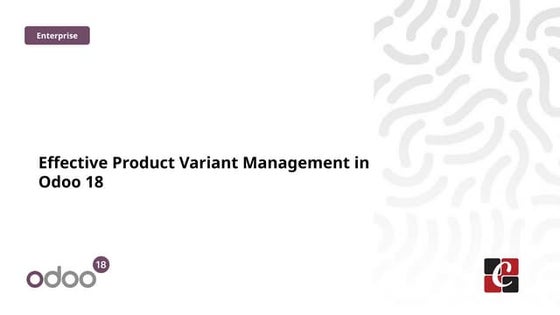



Effective Product Variant Management in Odoo 18Celine George
Ėý
In this slide weâll discuss on the effective product variant management in Odoo 18. Odoo concentrates on managing product variations and offers a distinct area for doing so. Product variants provide unique characteristics like size and color to single products, which can be managed at the product template level for all attributes and variants or at the variant level for individual variants.How to Configure Deliver Content by Email in Odoo 18 Sales



How to Configure Deliver Content by Email in Odoo 18 SalesCeline George
Ėý
In this slide, weâll discuss on how to configure proforma invoice in Odoo 18 Sales module. A proforma invoice is a preliminary invoice that serves as a commercial document issued by a seller to a buyer.Intellectual Honesty & Research Integrity.pptx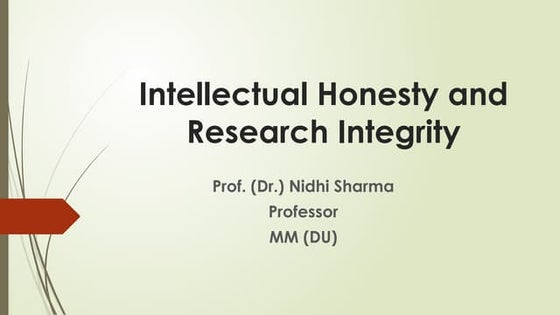



Intellectual Honesty & Research Integrity.pptxNidhiSharma495177
Ėý
Research Publication & Ethics contains a chapter on Intellectual Honesty and Research Integrity.
Different case studies of intellectual dishonesty and integrity were discussed.Chapter 2. Strategic Management: Corporate Governance.pdf



Chapter 2. Strategic Management: Corporate Governance.pdfRommel Regala
Ėý
This course provides students with a comprehensive understanding of strategic management principles, frameworks, and applications in business. It explores strategic planning, environmental analysis, corporate governance, business ethics, and sustainability. The course integrates Sustainable Development Goals (SDGs) to enhance global and ethical perspectives in decision-making.Azure Data Engineer Interview Questions By ScholarHat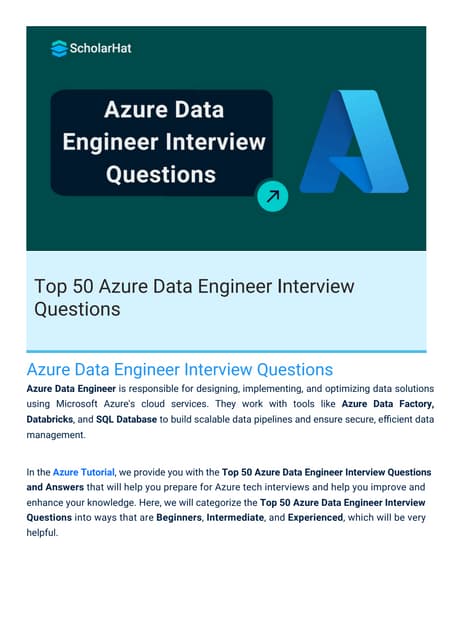



Azure Data Engineer Interview Questions By ScholarHatScholarhat
Ėý
Azure Data Engineer Interview Questions By ScholarHatOne Click RFQ Cancellation in Odoo 18 - Odoo šÝšÝßĢs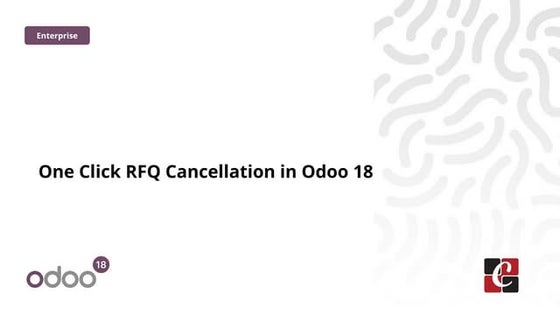



One Click RFQ Cancellation in Odoo 18 - Odoo šÝšÝßĢsCeline George
Ėý
In this slide, weâll discuss the one click RFQ Cancellation in odoo 18. One-Click RFQ Cancellation in Odoo 18 is a feature that allows users to quickly and easily cancel Request for Quotations (RFQs) with a single click.How to Configure Recurring Revenue in Odoo 17 CRM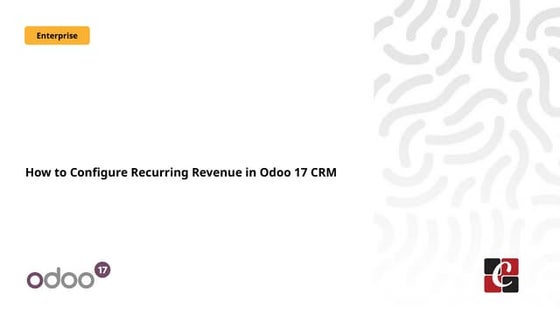



How to Configure Recurring Revenue in Odoo 17 CRMCeline George
Ėý
This slide will represent how to configure Recurring revenue. Recurring revenue are the income generated at a particular interval. Typically, the interval can be monthly, yearly, or we can customize the intervals for a product or service based on its subscription or contract. Hannah Borhan and Pietro Gagliardi OECD present 'From classroom to community ...



Hannah Borhan and Pietro Gagliardi OECD present 'From classroom to community ...EduSkills OECD
Ėý
Hannah Borhan, Research Assistant, OECD Education and Skills Directorate and Pietro Gagliardi, Policy Analyst, OECD Public Governance Directorate present at the OECD webinar 'From classroom to community engagement: Promoting active citizenship among young people" on 25 February 2025. You can find the recording of the webinar on the website https://oecdedutoday.com/webinars/
RRB ALP CBT 2 RAC Question Paper MCQ (Railway Assistant Loco Pilot)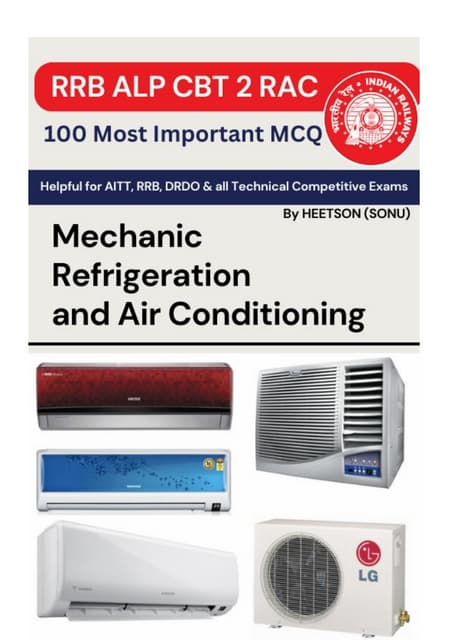



RRB ALP CBT 2 RAC Question Paper MCQ (Railway Assistant Loco Pilot)SONU HEETSON
Ėý
RRB ALP CBT 2 RAC Question Paper MCQ PDF Free Download. Railway Assistant Loco Pilot Mechanic Refrigeration and Air Conditioning Important Questions.ASP.NET Web API Interview Questions By Scholarhat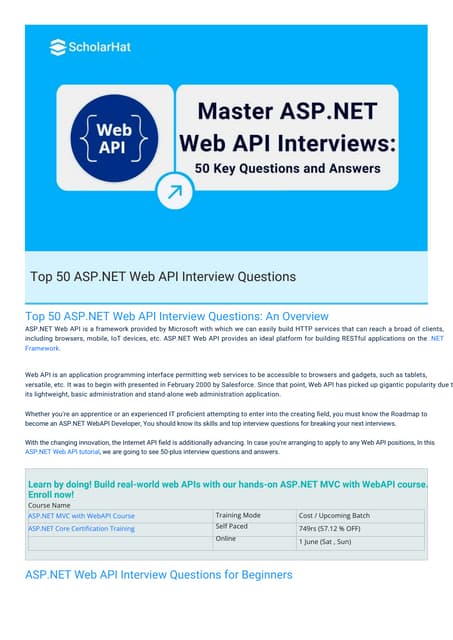



ASP.NET Web API Interview Questions By ScholarhatScholarhat
Ėý
ASP.NET Web API Interview Questions By ScholarhatAdministrative bodies( D and C Act, 1940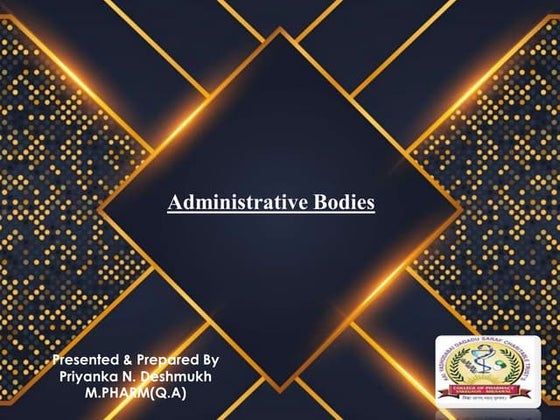



Administrative bodies( D and C Act, 1940P.N.DESHMUKH
Ėý
These presentation include information about administrative bodies such as D.T.A.B
CDL AND DCC, etc.BISNIS BERKAH BERANGKAT KE MEKKAH ISTIKMAL SYARIAH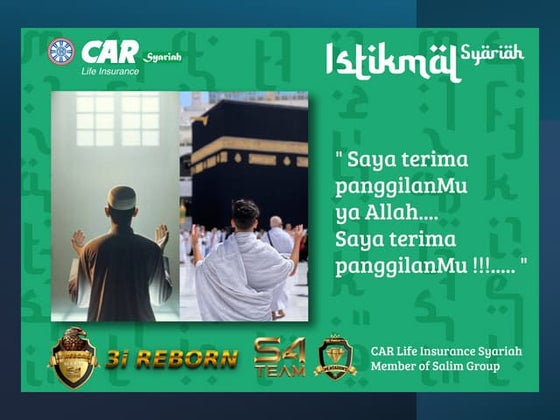



BISNIS BERKAH BERANGKAT KE MEKKAH ISTIKMAL SYARIAHcoacharyasetiyaki
Ėý
BISNIS BERKAH BERANGKAT KE MEKKAH ISTIKMAL SYARIAHFederalism powerpoint
- 2. The Constitutiondivides power betweenthe national government and the states. This creates fivedifferent types of powers withintheConstitution.
- 3. 1. Enumerated Powers~ Powers given to thefederal government by the Constitution Enumeratedpowers are those powers given specifically (and only) to the national government. They can be foundin thefirst three Articles of the Constitution.
- 4. 2. ExpressedPowers~ Powers given specifically to Congressby the Constitution These powers are listed in Article I, Section 8 of the Constitution. These are powers that onlyCongress may do, such as: âĒdeclare war âĒcoin money âĒestablish a postal service âĒmaintainan army and navy
- 5. Expressed powers are a special kind of enumeratedpower. A diagram of thetwo powers might look like this: Enumerated Powers Expressed Powers Allexpressed powers are also enumerated, but not allenumerated powers are expressed.
- 6. Thinkabout it this way--if wemade a diagram showing all the birds in the world, it mightlook like this: Birds Ducks Allducks are birds, but not all birds are ducks. Yes?
- 7. Same comparison we can makebetween expressed and enumeratedpowersï Enumerated Powers Expressed Powers Birds Ducks Allexpressed powers are enumerated,but not allenumerated powers are expressed.
- 8. 3. Reserved Powers~ Powers theConstitutionsavesfor the states These are powers thatonlythe stategovernments may do, such as: âĒ operate the schools âĒ issue licenses (driverâs, marriage, doctorâs, etc.) âĒ run elections withinthe state
- 9. 4. Concurrent Powers~ Powers sharedbetweenthe statesand the nationalgovernment These are powers thatthe statesand thenationalgovernment can do at the same time, such as: âĒmake laws âĒtax âĒborrow money âĒestablish courts âĒmaintainroads
- 10. 5. Implied Powers~ Powers given to Congress, but thatare not written, butsuggested, by the Constitution Implied powers come a specific sentence in Article I--Article I, Section 8, Clause 18. Clause 18 says Congress may do whatever else it needs to do to accomplish its Expressed powers. Thissentence is calledthe Elastic Clause--it stretchesthe powers given to Congress.
- 11. Implied powers allow Congress powers that are not specifically listedin the Constitution. For this reason, the Anti-federaliststhought it was the most dangerous sentence in the Constitution. Because of implied powers, Congress can builda mint to coin money. Implied powers also means Congress can control: âĒspace exploration âĒnuclear power âĒradio and TVcommunications (FCC)







